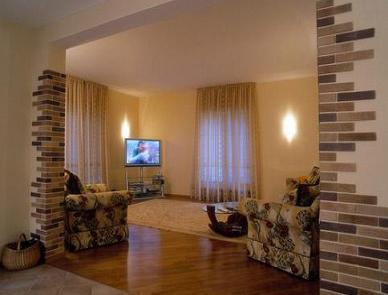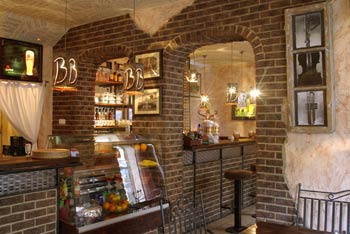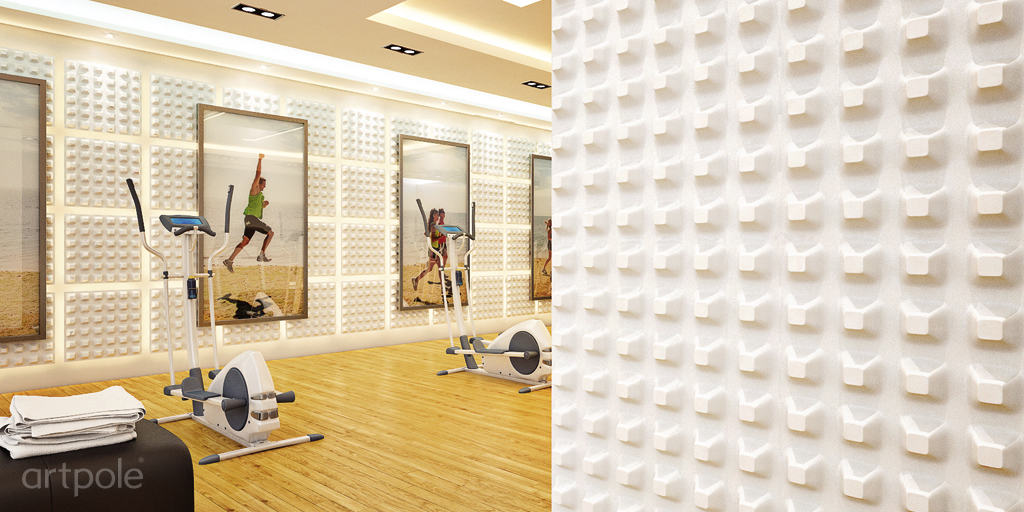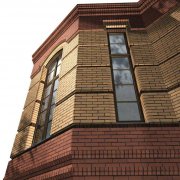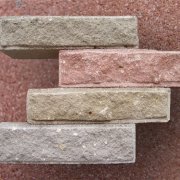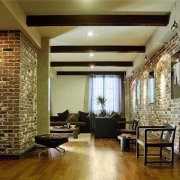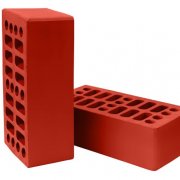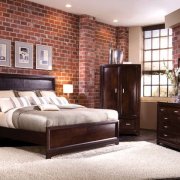Choosing gypsum brick for interior decoration
Plaster can be attributed to one of the first building materials used in architecture. Brick gypsum for interior and exterior was used in Babylon and Ancient Greece.
Masonry made of gypsum decorative brick looks "torn" and resembles the decoration of a "wild stone". Gypsum brick can be made with your own hands, but it is preferable to work with the finished material.
The content of the article
Characterization, properties, application of gypsum
Gypsum is a natural sedimentary material from which decorative and decoration products are made. Dry mixes, stucco products, grouts for joints, drywall and gypsum panels for interior decoration, gypsum wall tiles.
Plaster products have a lot of positive properties and qualities:
- Environmental friendliness, the product is characterized by the absence of harmful chemical compounds and components.
- The properties maintain a favorable indoor climate, optimal temperature and humidity comfortable for humans.
- It has good heat and sound insulation properties.
- Fire resistance and heat resistance. The tile can withstand heating up to 70 ° C and is used for facing not only decorative, but also existing fireplaces, stoves and electric fireplaces.
- Easy installation does not require the involvement of third-party specialists.
- Low price, which ranges from 500-700 rubles. per square meter.
- The possibility of self-manufacturing.
- A great combination with a wide variety of styles, both ancient Gothic and modern lofts.
- The interior using decorative plaster trim looks luxurious and rich.
- The instruction of modern designers contains recommendations on the use of alternative tiles for plaster bricks instead of real masonry or drywall finishes.
Gypsum decoration
Brick walls without plaster are rarely found in modern apartments, and building a new masonry is dirty, expensive and difficult. Decorating with plaster products fits perfectly into the modern interior and creates a pristine look of "wild stone", combining natural design, high performance and practicality.
So:
- A great find for lovers of the original and comfortable home is decorating the interior with brick imitation.
- The most popular types of finishes include cladding doorways and arches. The atmosphere of the room changes when, instead of the usual slopes of wood, gypsum tile under a stone is used for interior decoration.
- Facing and decoration of external corners, which are the narrowest and most vulnerable place in the apartment. Protruding corners, for which you constantly touch.
They get dirty, they are deformed, peeled off and torn wallpaper. An acceptable option is a tile under a plaster brick.
It is able to decorate, protect and turn corners into active decoration elements. - The design of various niches and recesses, wall mirrors is another well-tried-out technique for designers, which is loved by many customers. In the photo and video you can see the proposed options.
- Plaster decoration of the walls is carried out, and there are various methods of wall cladding, in whole or in part.A combination of fragments of “torn” masonry with wallpaper, tiles of contrasting color and texture or decorative plaster looks very unusual and rather original.
Caution: This material is afraid of the effects of precipitation and high humidity, so its use is limited only to the interior.
- The hygiene of the material allows its use in decorating the walls of the nursery. Being pleasant to the touch, it is easy to process.
Brick laying techniques
Gypsum brick laying is carried out previously on the floor or gypsum plasterboard.
The color of the tiles is selected, the tools are prepared:
- You will need a tape measure, pliers, a knife with a very sharp tip, an ordinary saw blade for sawing samples, side cutters so as not to engage in frequent sawing, and just cut and trim some places.
- The tile is leveled, cleaned in small pieces so as not to break it.
- Wall decoration with gypsum is made by any composition from PVA to assembly glue, a usual putty put in a container.
- The walls in front of the cladding, for better adhesion, are necessarily treated with a special primer or gypsum plaster.
- The cement-adhesive mixture is applied with a notched trowel directly on the primer surface.
- The stone is lightly pressed and laid, thus, from below, so that excess glue or solution is squeezed out from under it and filled the gaps. This will increase the strength of the masonry.
Attention: The work is carried out as carefully as possible so that the tile does not get dirty with putty or glue.
- Experts recommend lining no more than one meter, so that the solution has time to dry.
- Control and maintain horizontal and vertical lines of brickwork. Some uneven rows in the masonry is permissible only with a decorative style of decoration.
- After completing the work and filling the joints, the brick tiles can be varnished, which will preserve the color for a long time and allow it to be taken care of.
Gypsum panel as a base for finishing
A similar coating to concrete or plaster is worthy of attention gypsum panels, acting as structural bases for the finishing finishes. Getting a quality surface involves sealing joints between gypsum panels in the first stage, and preparing your own surface of gypsum panels for finishing in the second stage.
Joints of gypsum panels and their sealing
Three main factors affect the absence of cracks in the joints of gypsum panels:
- Gypsum paneling is described in detail in the technical recommendations of the manufacturers of this material. It is necessary to qualitatively and correctly carry out the installation of panels.
- The work is carried out in strict sequence of compliance with the technology of operations, at normal, operating temperature and humidity obtained after completion of wet processes and the necessary drying.
- Particularly noteworthy is the workmanship of the applied panels.
Two main types of putty filling joints are used. Work with putty with and without sealing tape.
So:
- Putties with sealing tapes are intended for joining gypsum panels with thinned edges. These include vertical joints along the long side of the sheet.
Putty mixture is bred in accordance with the scope of work, because it has a certain suitability cycle for work. Ready-made putty pastes are gaining more and more popularity and application, especially where a minimal human factor and its influence are needed. - Joints on the short side of the sheet, semicircular and beveled edges are filled with a putty of the second type. Putty perceives the processes of deformation of the frame and gypsum sheets at the joints.
The manufacturer of these fillings gives the standardized parameters of compressive and tensile strength. Excellent characteristics and properties of putties of this group provide the opportunity for decorative surface finishes.
Good ductility of the material contributes to the formation of curved surfaces of ceilings and walls, the implementation of rounded corners and obtain the desired texture. The use of these materials does not require reinforcing agents and protects against the formation of shrinkage cracks.
Gypsum Finish
Why do we need additional preparation of the surface of gypsum sheets, if it is already quite smooth and even?
However, there are two main points and methods of preparing them for final finishing:
- The first method - after sealing joints, the entire surface of the gypsum board is primed, painted, and wallpapered. It is necessary to focus on the type of primer.
It is more efficient to use filled, pigmented primers with a white color. The standard mouse color of the panels transforms into silky white with a uniform surface.
This is especially true when deciding thin, translucent wallpaper. - The second point - the gypsum finish of the room is completely covered with a thin, finishing putty, necessary for applying high-quality paint or for other operations. Here, attention must be paid to the finishing putty, capable of filling and eliminating minor defects.
There are ultrafine dispersed putties that make up a dense, silky, homogeneous surface that does not need additional sanding. - Gypsum panels and their installation do not present difficulties in work, because there is a variety of adhesive compositions. Modern gypsum panels are produced using "seamless" technology, which contributes to relief joining and the creation of decorative panels.
The relief and colors are selected according to the customer.
Gypsum brickwork can decorate any interior. Work with it will be done quickly, without unnecessary dirt and debris, and the house will receive its zest, originality and originality.
